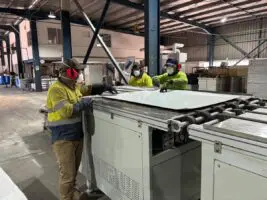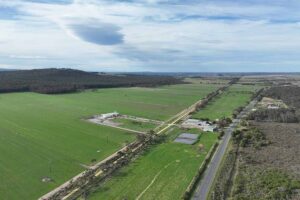Leading investment experts have warned that a fracturing of Australian energy and climate policy, caused by a vacuum of federal government leadership could lead to suboptimal outcomes for investors, energy markets and efforts to decarbonise the Australian economy.
State governments are already leading on climate and renewable goals and are now seeking to implement their own separate targets for the transition of their energy systems, but experts say the lack of unity means Australia is losing the opportunity to optimise its opportunities.
Last week, NSW energy minister Matt Kean said his state would push forward with its own policies to attract investment in new renewable energy projects and did not want NSW energy users lumped with the costs of a federal government plan to subsidise coal-fired generators.
It was the latest indication that a number of state governments would pursue their own energy and emissions reduction policies, given the lack of leadership being shown at a federal level.
Martijn Wilder, the founding partner of Pollination Group, told the ANU Crawford Leadership Forum on Tuesday that a coordinated national plan was key to providing confidence to investors about the future direction of Australia’s energy system, particularly given the interconnected nature of much of its electricity markets.
“It is unfortunate at the moment that the states don’t view energy policy, or they approach energy as an issue, based on what’s best for the system. It’s more what’s best for the state,” Wilder said.
“I think the first thing we need to do is have the states work together, particularly where there are disagreements with the federal government.”
“So thinking about what’s best for the NEM, as opposed to what’s best for their state. And that ultimately, that means what’s best for Australia?” Wilder added.
Wilder said taking a system-wide view of energy transformation can present significant investment opportunities for Australia – including in industries like transport, where Australia was well placed to seize upon opportunities created in the swift transition to electric vehicles.
“When the state government of NSW says we want 8000 electric buses the thinking should be – rather than just buying those buses from overseas – how do we actually from the ground up, build an entire sector that’s based on a renewable energy to include bus manufacturing, and drive that at scale very fast, and then make that an export industry?” Wilder added.
Partner at consultancy EY, Emma Herd, said that major investors were already grappling with the challenge of decarbonisation and a shift to zero-emissions economies – even without a specific commitment from the federal government on when Australia will make such a shift.
“There’s a lot of active conversation going on between investors and companies and trying to understand that the answer to that very question, in some cases, investors are also setting their own net zero commitments,” Herd said.
“Effectively, what the finance sector is trying to do is understand what the net zero portfolio looks like – How do you set an emissions reduction target for your own portfolio, and how do you reflect that in your investment strategy?
“How do you embed in every investment decision that you’re making your goal to achieve net zero by 2050? Or in the case of many Australian funds – 45 per cent reductions in emissions by 2030,” Herd added.
Herd added that investors were already pro-actively exiting from some industries that were seen to be unacceptably emissions-intensive and instead looking to seize upon opportunities being created in new, low emissions, industries.
“Some investors are choosing to divest where they think that the company is too carbon intensive, they don’t fancy the future of the industry sector, or they think that the company is not adequately or sufficiently managing their carbon risk effectively,” Herd said.
“Some are trying to diversify, getting out of a heavy concentration in carbon-intensive stocks and looking to increase their exposure into industry sectors which are less exposed to carbon risk, or potentially are well-positioned to benefit from the transition.”
“In in the last couple of years, while we’ve been working our way through the pandemic, and all of the policy responses, we’ve actually seen capital allocation into low carbon industries accelerating – because it’s safer than what might be seen in some of the more traditional carbon-intensive industry sectors,” Herd added.







